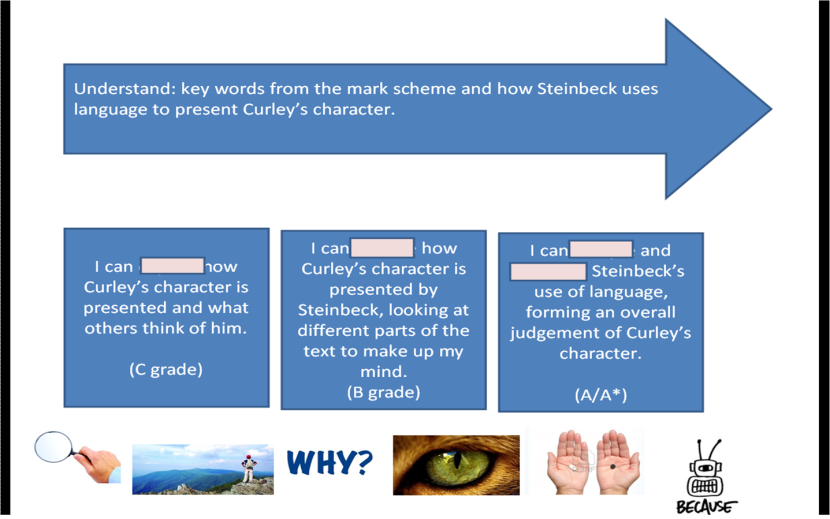Tagged: resources
‘Quick wins’ #15 – Getting students to articulate their learning.
Why? I guess I was never really convinced by the idea of getting students to articulate their learning; I thought it was one of those tokenistic additions to lessons, something that would please the observer rather than having an impact on students’ learning. So, when students were clearly making progress through their written work, I was little concerned if they couldn’t express precisely what they were learning, verbatim, like they had regurgitated every word of the specification. I was also very cautious of time that this took; I feared it would slow down the pace of the lesson, that I would lose the students before I had a chance to engage them. I was wrong…
Possible solution. I now think that getting students to precisely articulate their learning is integral to their engagement and to their progress. So, what changed? Persistence and developing habits. Just like Einstein said,
We are what we repeatedly do. Excellence, then, is not an act, but a habit.
Although I had always shared the lesson outcomes with students, their interaction with them was something that I tried to build on, every lesson; before, I had just assumed that reading the objectives to students was enough. However, David Didau’s book, The Perfect English Lesson, was something which helped me to question this process. He talks about getting students to interact with the lesson objective in creative ways – getting them to guess missing words; to write the lesson objective as a facebook status and then allowing students to comment on this. Therefore, I took inspiration from this.
Firstly, I started with the language in the outcomes of the objective. I stripped the specification down, picking out the key words. For a reading lesson in English this usually translates to getting students to explain, explore, analyse language or ideas. Through questioning, I then got students to define – precisely – what these words meant. To help with this I added pictures beneath my outcomes and I asked students to match up the correct pictures to the outcomes. This led to an increased sense of clarity. For example, students were able to link the picture of an explorer surveying a landscape to the need to look everywhere in a text; to find more than one quotation to support a point; to look at more than one interpretation when looking at a quotation. Discussion evolved further to looking at sentence starters which would help students to demonstrate that they were explaining or exploring an idea.
Resources.
Example learning objectives (editable).
Outcome. This strategy has worked successfully. Students are now clearly able to say what they are learning in a lesson and they can also precisely say what level they are working at, as well as being able to articulate how to move to the next level. This has motivated students: their next learning milestones have shrunk, becoming tangible, and within their reach. Also, with a new emphasis on lesson grades being linked to ‘progress over time’, students’ ability to articulate what they have learnt and how they have progressed is more paramount than ever. In a recent observation it was great to see students explaining to the observer what they had learnt and how they could progress further. However, I don’t think this has solely been achieved by getting students to interact with the lesson objectives and outcomes alone; the language used in the objectives has permeated all aspects of learning. I have used it repeatedly through questioning and book marking, too. In this respect, it has also sped up the latter as, in some cases, I am able to write ‘explain your point’ or ‘analyse these words.’ In short, having high expectations around students being able to articulate their learning has led to significant improvements in my classroom. So, if you are worried about this absorbing too much lesson time, fear not: just persist. And slowly, students will possess a clear understanding of what they need to learn, and know exactly how to get there.
Post submitted by:
Steve Gill
#neverstoplearning
Feedback. Please let us know how ‘Getting students to articulate their learning’ worked for you. Leave a comment on this post or tweet us at @nslhub.

